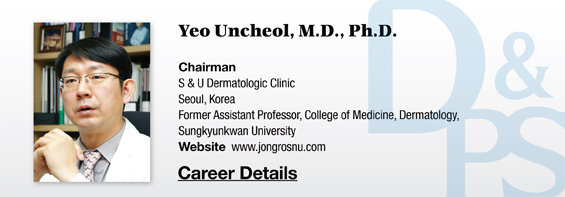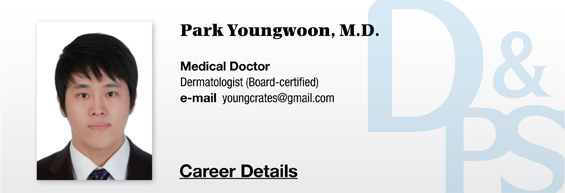5. Long-Pulsed Lasers
There is a growing interest in applying the “dual mode” or “dual toning technique” of Laser toning in melasma and studies have reported favorable results on this technique.65-67 The dual toning technique, which is not an official term, refers to the combination therapy using low-fluence QS Nd:YAG Laser and long-pulsed Nd:YAG Laser.
The theoretical basis of this technique is, as discussed above, using long-pulsed Laser to improve the altered dermal environment of the lesion site to obtain superior short-term and long-term results than with Laser toning alone.
Most studies used 0.3 ms quasi-long pulsed Nd:YAG Lasers,65-67 however, the millisecond domain long-pulsed Lasers are also being used in clinical practice. As discussed above, IPL or fractional Laser can be combined with Laser toning for the purpose of improving the dermal environment and such combination can be regarded, in principle, as dual toning technique.
It is important to select the effective wavelength and pulse width of Laser to achieve skin rejuvenation and dermal remodeling. The long pulse 1,064 nm Nd:YAG Laser may offer particular benefits considering its absorption coefficients of melanin and water.
6. 1,927nm Fractional Thulium Fiber Laser
The 1,927 nm fractional thulium fiber Laser was introduced in 2009 and has about 10 times higher absorption coefficient of water compared to the 1,550 nm erbium-doped fiber Laser. Due to this property, its photothermal effect is limited to the dermoepidermal junction and upper dermis, which enables effective removal of epidermal pigments.
The stratum corneum has a relatively lower water content than the epidermis and tends to have lower thermal reaction to the fractional thulium Laser, which enables its preservation. As this may help rapid recovery and reduce inflammation, the fractional thulium Laser is expected to be beneficial in the treatment of melasma.
Studies have reported that as the fractional thulium Laser is able to preserve the stratum corneum and deliver the photothermal effect to a limited depth, the risk of side effects such as PIH and rebound hyperpigmentation is minimalized, while melasma is effectively improved.68-71 The fractional thulium Laser has superior efficacy in removing melanin compared to other fractional Lasers, however, long-term follow-up is needed to evaluate its long-term efficacy and safety in melasma.
[Advertisement] MAGNUM(Q-switched Nd:YAG Laser) – Manufacturer: (www.i-dana.com)]
7. Dual-Pulsed Laser Toning
It is interesting that no studies so far have actually examined the impact of the pulse width in Laser toning therapy. That may be because Laser toning is generally performed using the 1,064 nm QS Nd:YAG Laser which provides a fixed pulse width. Studies on the pulse width have been performed only recently. Alsaad et al.72 compared the 5 nanosecond (ns) QS Nd:YAG Laser and 50 ns QS Nd:YAG Laser in terms of pain and efficacy.
They found the difference in MASI scores between two groups was not statistically significant but the pain score was significantly lower in the 50 ns QS group.72 Considering the principles of Laser toning treatment and thermal relaxation time (TRT) of melanosomes, the 50 ns QS Nd:YAG Laser may be useful in Laser toning therapy of melasma. Few studies have looked at the importance of pulse width in Laser toning for melasma but future research on this topic will help bring new innovations in the treatment of melasma.
-To be continued
References
64. Kang HY, Hwang JS, Lee JY, Ahn JH, Kim JY, Lee ES, et al. The dermal stem cell factor and c-kit are overexpressed in melasma. Br J Dermatol 2006;154:1094-9.
65. Kang H, Kim J, Goo B. The dual toning technique for melasma treatment with the 1064 nm Nd: YAG Laser: A preliminary study. Laser therapy 2011;20:189-194.
66. Choi CP, Yim SM, Seo SH, Ahn HH, Kye YC, Choi JE. Retrospective analysis of melasma treatment using a dual mode of low-fluence Q-switched and long-pulse Nd:YAG Laser vs. low-fluence Q-switched Nd:YAG Laser monotherapy. J Cosmet Laser Ther 2015;17:2-8.
67. Choi CP, Yim SM, Seo SH, Ahn HH, Kye YC, Choi JE. Retreatment using a dual mode of low-fluence Q-switched and long-pulse Nd:YAG Laser in patients with melasma aggravation after previous therapy. J Cosmet Laser Ther 2015;17:129-34.
68. Polder KD, Bruce S. Treatment of melasma using a novel 1,927-nm fractional thulium fiber Laser: a pilot study. Dermatol Surg 2012;38:199-206.
69. Niwa Massaki AB, Eimpunth S, Fabi SG, Guiha I, Groff W, Fitzpatrick R. Treatment of melasma with the 1,927-nm fractional thulium fiber Laser: a retrospective analysis of 20 cases with long-term follow-up. Lasers Surg Med 2013;45:95-101.
70. Lee HM, Haw S, Kim JK, Chang SE, Lee MW. Split-face study using a 1,927-nm thulium fiber fractional Laser to treat photoaging and melasma in Asian skin. Dermatol Surg] 2013;39:879-88.
71. Ho SG, Yeung CK, Chan NP, Shek SY, Chan HH. A retrospective study of the management of Chinese melasma patients using a 1927 nm fractional thulium fiber Laser. J Cosmet Laser Ther 2013;15:200-6.
72. Alsaad SM, Ross EV, Mishra V, Miller L. A split face study to document the safety and efficacy of clearance of melasma with a 5 ns q switched Nd YAG Laser versus a 50 ns q switched Nd YAG Laser. Lasers Surg Med 2014;46:736-40.






















